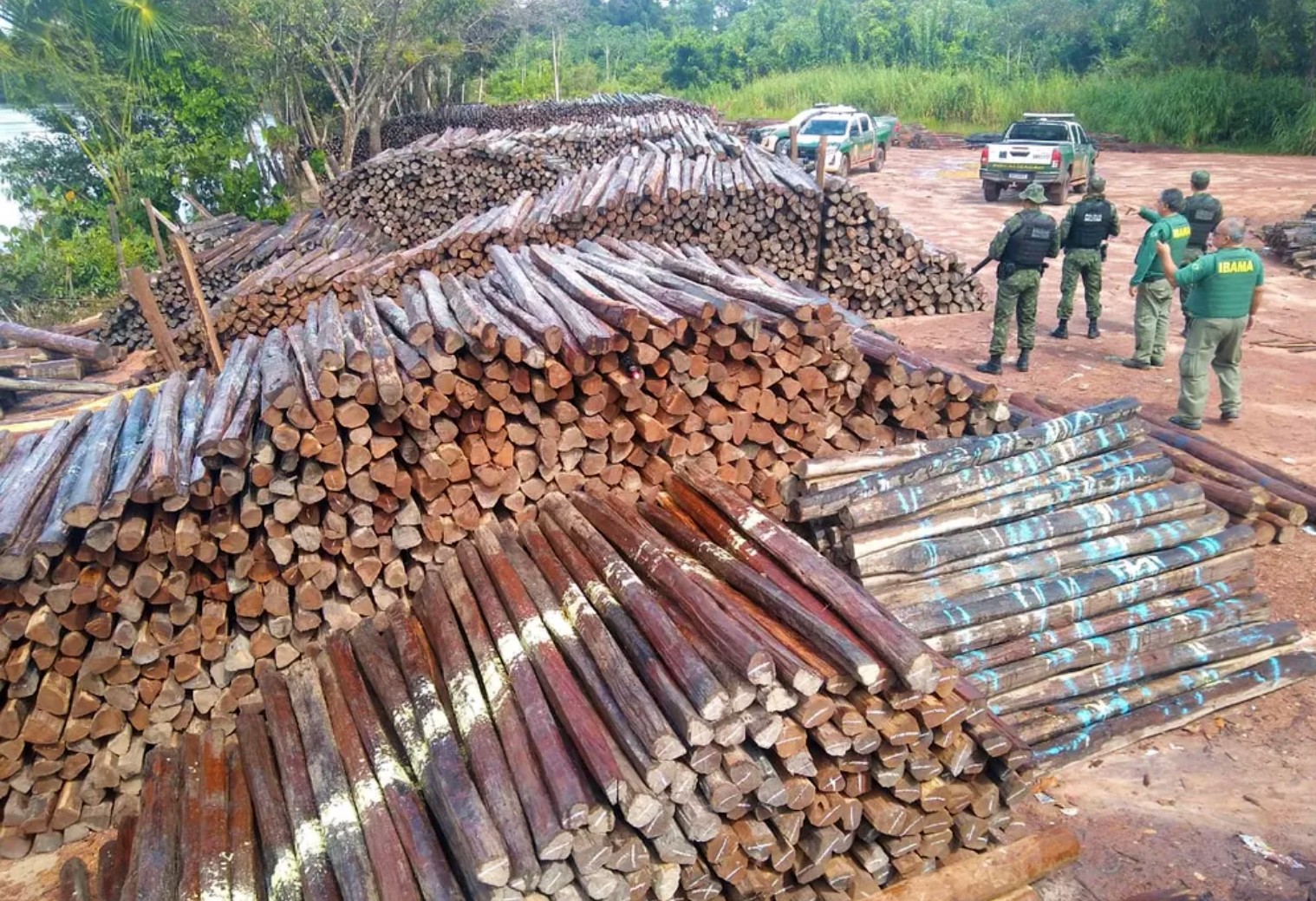

Research was published in the journal Nature Sustainability (photo: IBAMA)
Solution developed at the Center for Research in Mathematical Sciences Applied to Industry is based on the analysis of the timber trade network.
Solution developed at the Center for Research in Mathematical Sciences Applied to Industry is based on the analysis of the timber trade network.

Research was published in the journal Nature Sustainability (photo: IBAMA)
Agência FAPESP* – Deforestation in the Amazon was once thought to be out of control. However, recent rates indicate a downward trend, mainly due to the control mechanisms implemented and the scientific research that has made it possible to effectively monitor the forests.
Several strands of solutions are emerging within universities, and one that is helping to curb illegal logging in Brazil was highlighted in an article published in the journal Nature Sustainability.
The study was funded by FAPESP (projects 22/09091-8 and 21/07012-0) and one of the authors was Luis Gustavo Nonato, professor at the Institute of Mathematical and Computer Sciences of the University of São Paulo (ICMC-USP) and member of the Center for Research in Mathematical Sciences Applied to Industry (CeMEAI), a FAPESP Research, Innovation and Dissemination Center (RIDC).
According to him, the study is based on an analysis of the timber trade network in Brazil. “By implementing control mechanisms and regulations, the Brazilian government has achieved positive impacts on deforestation rates,” he says. "At the same time, it’s produced important data on the timber trade, since all products resulting from logging, from raw logs to processed timber, must be registered in control systems in order to be transported and marketed. This makes it possible to model and analyze the timber network over time.”
According to Nonato, the big challenge was to integrate data from the three main control systems operating in Brazil. “This study integrates data from these systems to create timber trade networks that help identify companies or groups operating outside the expected standards. We also propose a method for tracing likely supply chains of timber companies, addressing long-standing government concerns about timber traceability,” the author explains.
The study shows that certain components of the timber trade network are operating without links to licensed forests, suggesting that unregistered material is being introduced into these components, which is illegal. “We also show how supply chain analysis can significantly increase consumer confidence in the legality of the wood products they buy,” Nonato points out.
The proposed approach, says the researcher, makes use of data that already exist in control systems, avoiding the use of economically costly technologies that are difficult to implement. “More efficient tracking systems tend to reduce fraud. In addition to reducing illegal deforestation itself and preserving biodiversity, reliability about the origin of purchased products increases the competitiveness of Amazonian wood on the global market, attracting sustainable investments that strengthen the sector. We’re also helping to improve working conditions and benefit local communities, as illegal logging and trade fuel social conflicts that mainly affect the most vulnerable populations,” he adds.
Another important factor to highlight, according to the researcher, is the fact that the proposed model is adaptable to other contexts, enabling solutions to similar problems related to the modeling and analysis of trade networks and supply chains, paving the way for new projects.
The article “Assessing timber trade networks and supply chains in Brazil” can be found at: www.nature.com/articles/s41893-024-01491-8.
*With information from CeMEAI
Republish
The Agency FAPESP licenses news via Creative Commons (CC-BY-NC-ND) so that they can be republished free of charge and in a simple way by other digital or printed vehicles. Agência FAPESP must be credited as the source of the content being republished and the name of the reporter (if any) must be attributed. Using the HMTL button below allows compliance with these rules, detailed in Digital Republishing Policy FAPESP.





